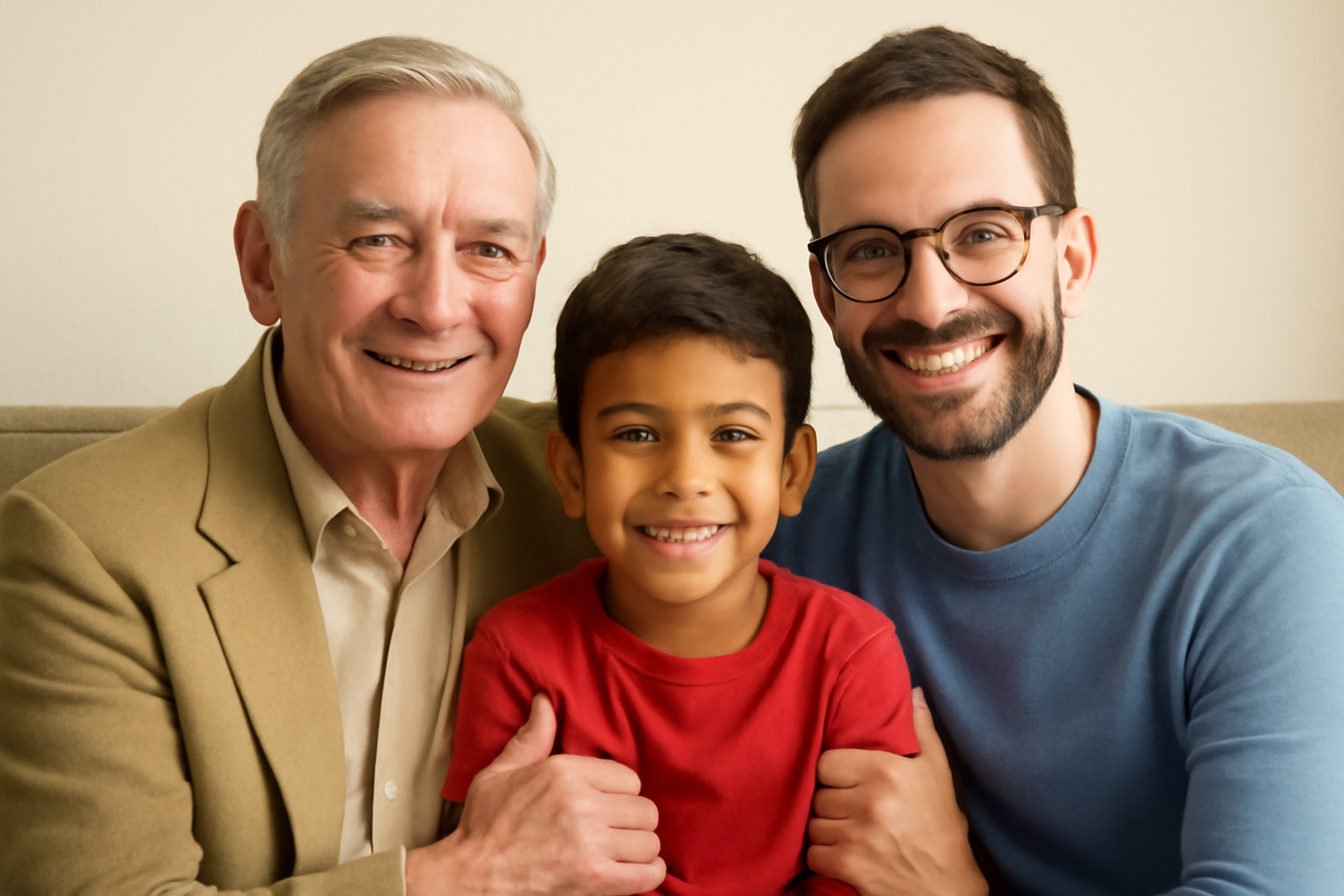
In the late 1960s, societal norms made it nearly impossible for LGBTQ+ individuals to openly form families through adoption. Bill Jones, however, became a pioneer in 1969 when he quietly adopted a child as a single man in San Francisco, marking the first documented case of a gay man adopting through official legal channels. The world came to know his story when the media spotlight turned on him and his son Aaron, yet few were aware of Jones' true identity as a gay man. In his memoir, "Bachelor Father," Jones candidly reflects on the necessity of concealing his sexuality out of fear that being honest would bring more harm than freedom.
Prior to his adoption, Jones explored various avenues to become a parent, including considering international adoption and attempting to conceive naturally, all to no avail. Unfortunately, before the late 1970s, adoption laws were structured to exclude LGBTQ+ individuals explicitly. The prevailing belief was that children thrived best in heteronormative, two-parent households, an assertion made by many self-proclaimed "experts" without specialized knowledge in child development. Despite this, the reality of countless dysfunctional traditional families was conveniently overlooked.
In a system where adoptions were largely reserved for married, heterosexual couples, child welfare advocates often faced a surplus of children without homes and a shortage of eligible parents. It was within this context that a sympathetic social worker orchestrated an adoption interview for Jones, subtly expressing hope that sexual orientation would not deter potential adoptive parents. "You know, I think homosexuals would make very good parents," she remarked, signalling a quiet rebellion against the status quo.
LGBTQ+ individuals have always been resourceful in creating families, whether through traditional means or by adopting children in informal arrangements. As societal attitudes towards family began to evolve in the 1970s and 80s, the opportunity for openly forming queer families grew. During this period, the number of children in foster care soared, with many deemed "undesirable" due to age, race, or behavioral challenges. As a result, adoption agencies started to relax their criteria to include single adults like Jones, who adopted Aaron, a child in need of care and love.
The gradual liberalization of adoption practices paved the way for a "gayby boom," marking a significant shift towards acceptance of LGBTQ+ families. By the mid-1980s, openly gay and lesbian couples began to adopt children, with notable cases such as Dmitri Belser and Thomas White, and Becky Smith and Annie Affleck breaking new ground in public perceptions of family. While conservative forces resisted these changes, the practical need to place children in loving homes eventually took precedence over outdated prejudices.
Legal victories throughout the 90s and into the 21st century further solidified the rights of LGBTQ+ individuals to adopt. Landmark cases, state-level reforms, and the federal recognition of same-sex marriage have all contributed to the normalization of diverse family structures. Despite setbacks and ongoing discrimination in certain regions, the progress made is undeniable. Today, LGBTQ+ parents are significantly more likely to adopt and foster than their heterosexual counterparts, often welcoming older children, siblings, and those with special needs into their homes.
The landscape of adoption and foster care continues to evolve, with organizations dedicated to supporting LGBTQ+ families playing a crucial role. Religious freedom arguments occasionally resurface as barriers, but they have not hindered the overall momentum towards inclusivity. Adoption remains a powerful avenue for building chosen families and providing stable, nurturing environments for countless children.
In conclusion, the journey of LGBTQ+ adoption from a clandestine act to a celebrated aspect of modern family life is a testament to resilience and the universal human desire to nurture and be nurtured. As society moves forward, the understanding that love and family transcend traditional boundaries only gains strength.
Related Posts
Triumphant Trans Woman Wins Legal Battle and Inspires Others to Stand Up for Their Rights
Breaking new ground: a landmark victory in transgender rights After battling in courtrooms and enduring endless challenges, Diana Portillo, a transgender woman, has secured a monumental victory in her decade-long fight against workplace discrimination. The result? Nearly $1 million awarded in a historic settlement. But this isn't just a win on paper—it represents a powerful precedent in combati [...]
Pride Month in Latin America: Protests and Demands for Equality
**Celebrating Pride and advocating LGBTQ+ rights in Latin America** Pride Month in Latin America was a lively mix where celebration met activism. Communities united, not just throwing a party but making a stand—demanding equality and pushing governments toward better protection and rights recognition. Throughout Latin America, pride events erupted in marches and cultural displays, each with a c [...]
Transgender Erasure Actions Implemented by National Park Service
```html Trump administration's impact on national park service and transgender recognition The Trump administration made notable moves in undermining transgender representation, which included directing agencies like National Park Service not include "T" and "Q" when they refered “LGBTQ” in any official communication. This move seems part a broader plan by this administration aimed at reducin [...]